
The German ultimatum ordering the Dutch commander of Rotterdam to cease fire was delivered to him at 10:30h on 14 May 1940. At 13:22h, German bombers set the whole inner city of Rotterdam ablaze, killing 814 of its inhabitants.
World War II lasted 2,194 days.
Between 75-80 million people died during the worst conflict in world history.
50-60 million perished as direct result of the war.
15-20 million died through war-related disease or famine.
50-55 million civilians were killed.
20-25 million combatants, including 5 million prisoners, died.
More than half of those killed came from the Republic of China (15-20m) and Russia (20-27m).
The United Kingdom (including Crown Colonies) suffered 450,900 deaths.
The United States had 419,400 deaths.
Germany had 6.9-7.4m
Japan lost 2.5-3.1m.
The Germans killed approximately 6 million European Jews during the war. The majority of these were killed in concentration camps. The rest were murdered by Nazi killing units.
The two nuclear bombs dropped the USA on Hiroshima and Nagasaki killed between 129,000 and 226,000 people, the majority of whom were civilians.

A German Luftwaffe Heinkel He 111 bomber flying over Wapping and the Isle of Dogs in the East End of London at the start of the Luftwaffe’s evening raids of 7 September 1940.

View along the River Thames in London towards smoke rising from the London docks after an air raid during the Blitz, 1940.

The British Columbia Regiment (Duke of Connaught’s Own Rifles) marching down Eighth Street at the Columbia Street intersection, New Westminster, British Columbia. Photo taken by Claude P. Dettloff on October 1, 1940
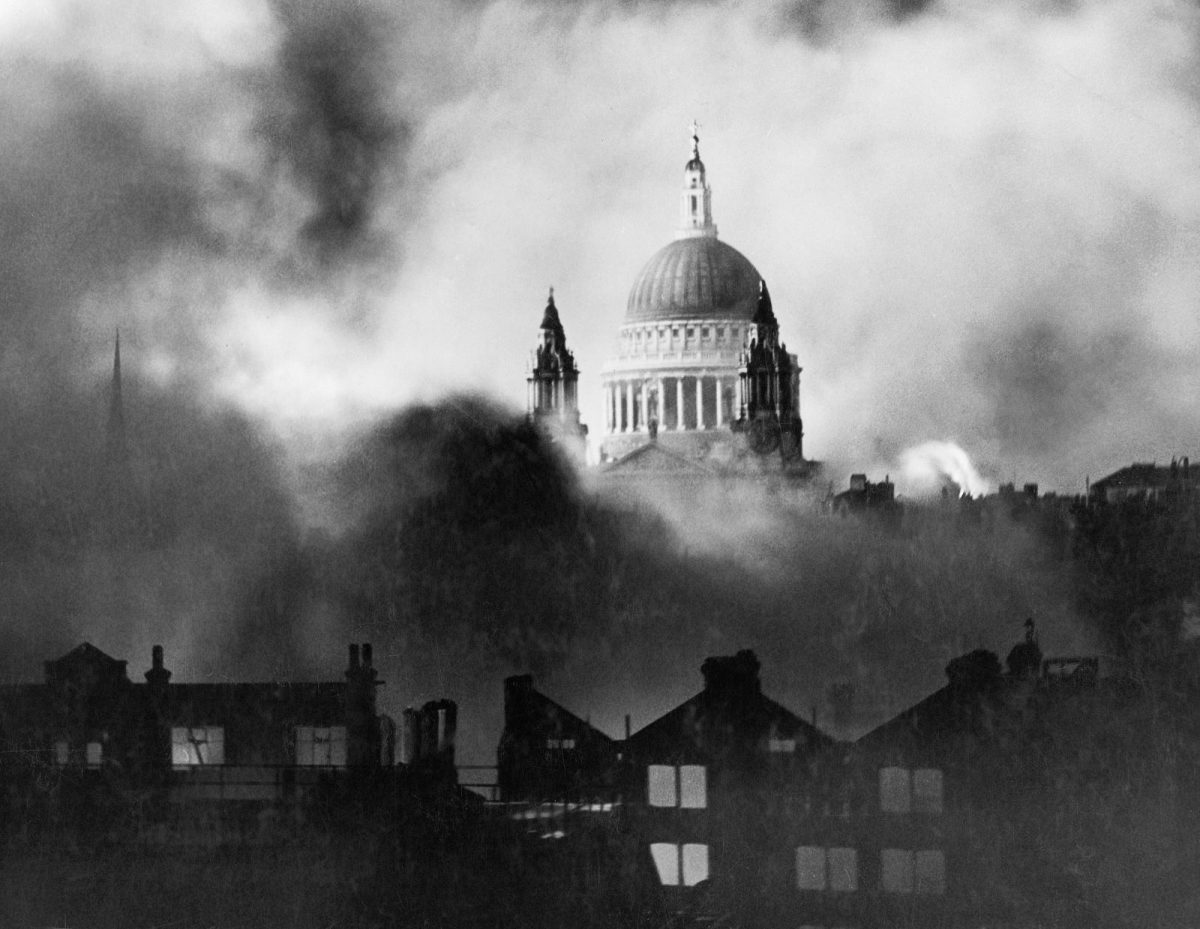
St. Paul’s Cathedral, illuminated by fires and surrounded by the smoke of burning buildings. It was taken by photographer Herbert Mason in the early hours of 30 December, from the roof of Northcliffe House, the offices of the Daily Mail newspaper, on Tudor Street, close to Fleet Street. This was the 114th night of the Blitz of World War II, 29–30 December 1940.
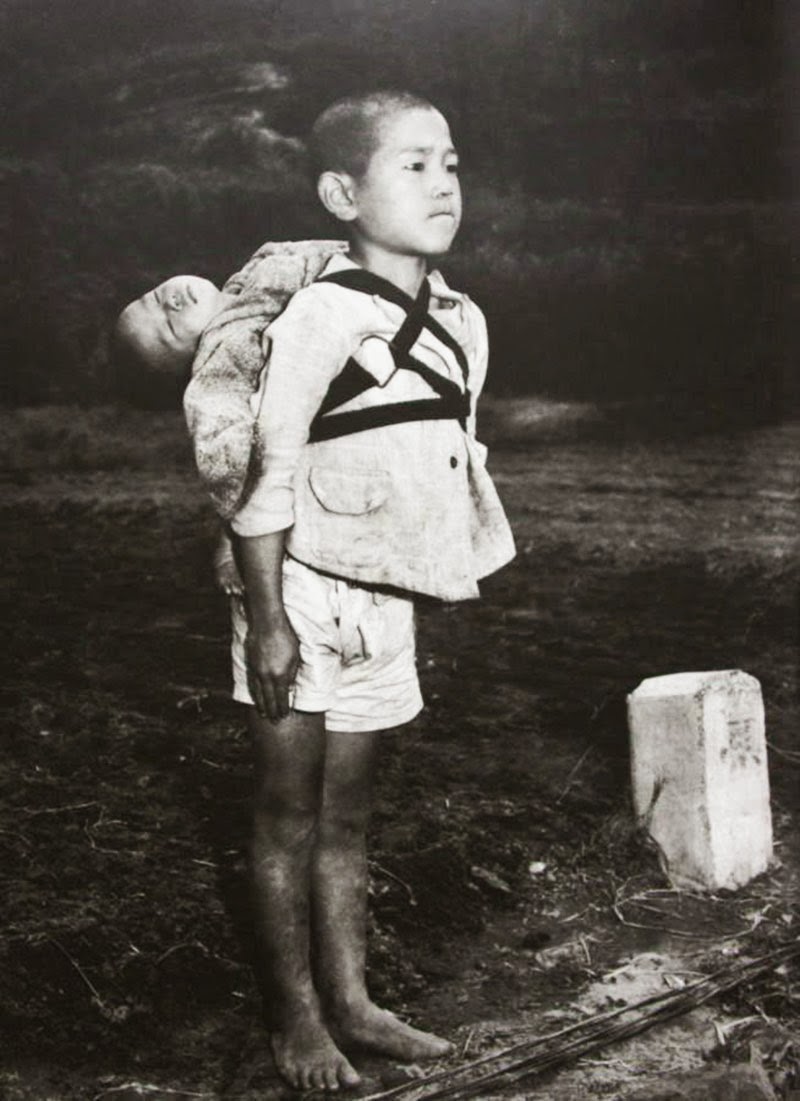
The boy standing by the crematory (alternatively “The standing boy of Nagasaki”) is a historic photograph taken in Nagasaki, Japan in September of 1945, shortly after the atomic bombing of that city on August 9, 1945. The photograph is of a boy of about 10 with his dead baby brother strapped to his back, waiting for his turn at the crematorium.
The photograph was taken by Joe O’Donnell, then working for the United States Marine Corps
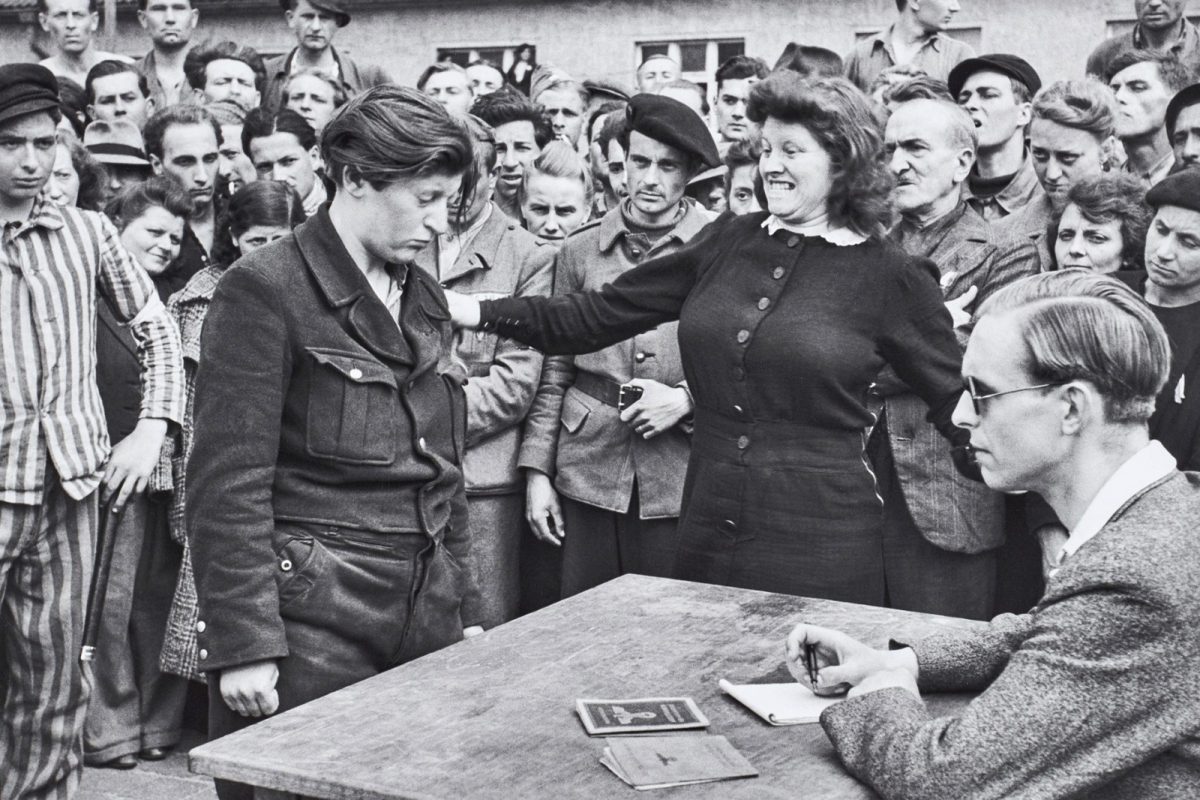
Gestapo Informer Recognized by a Woman She Had Denounced, Deportation Camp, Dessau, Germany, is a black and white photograph taken by Henri Cartier-Bresson in 1945.
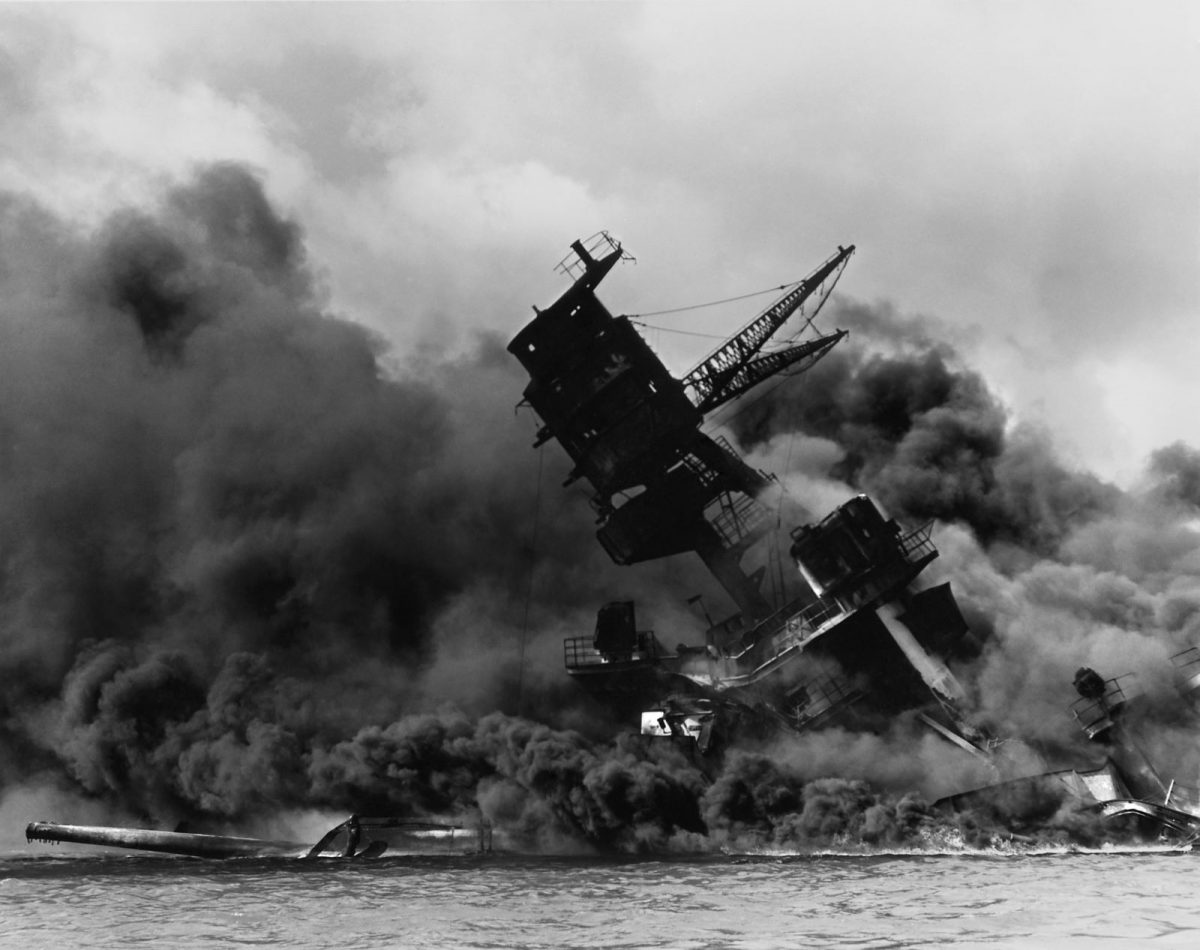
The USS Arizona (BB-39) burning after the Japanese attack on Pearl Harbor, 7 December 1941.

Executions of Jews by German army mobile killing units (Einsatzgruppen) near Ivangorod Ukraine, 1942.
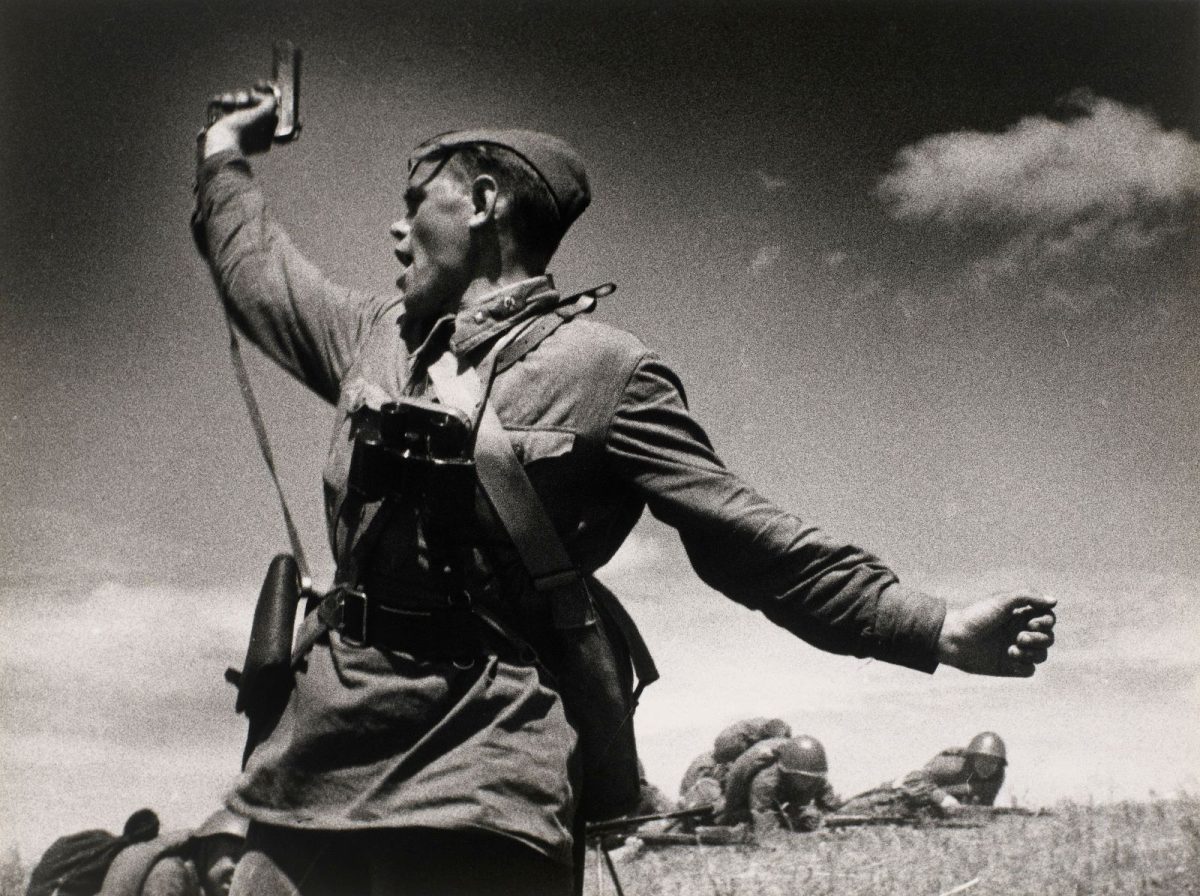
A. G. Yeremenko, Company political officer of the 220th Rifle Regiment, 4th Rifle Division, minutes before his death on 12 July 1942, in Voroshilovgrad Oblast, Ukraine.
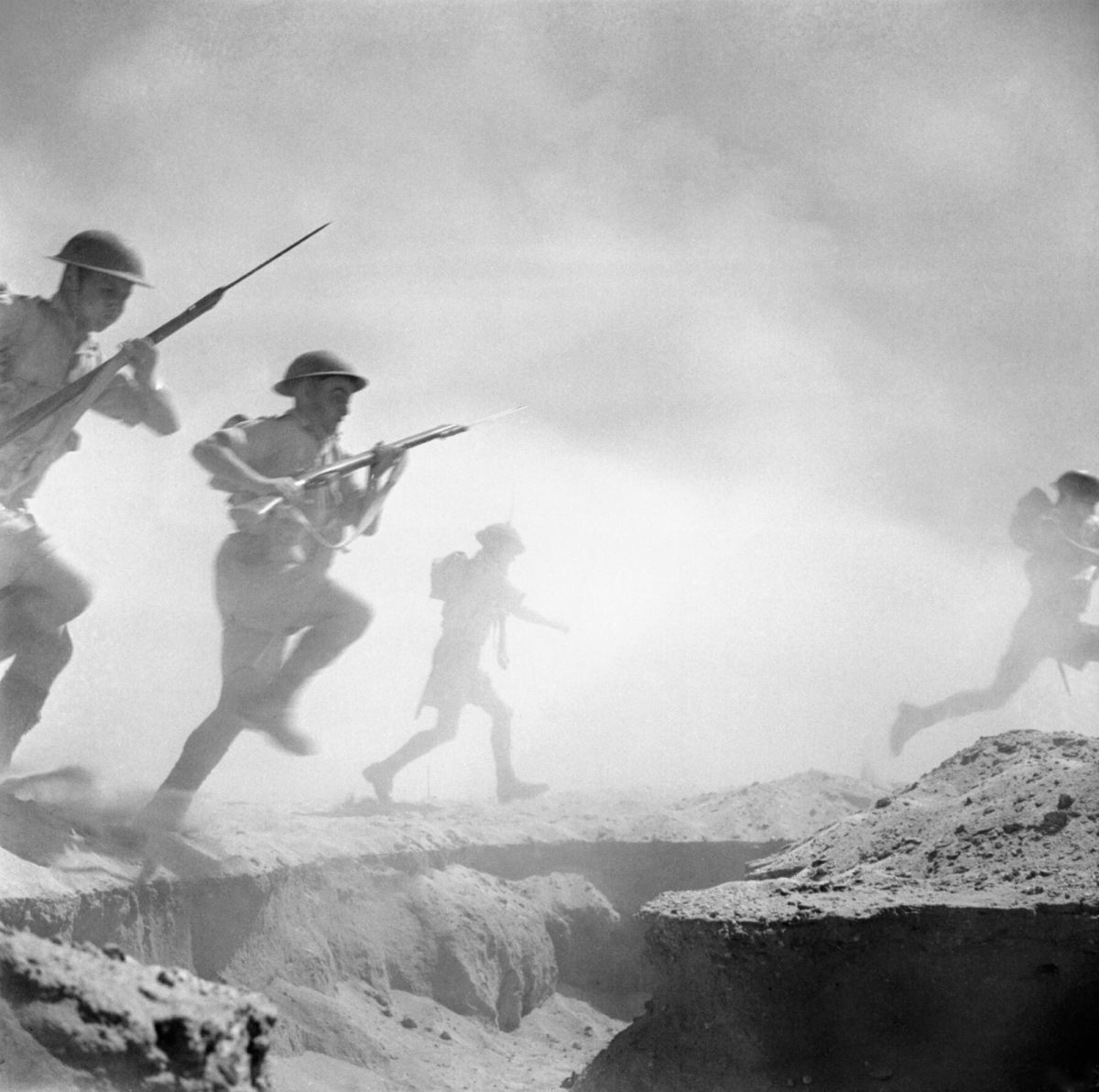
British infantry advances through the dust and smoke of the battle, El Alamein, 24 October 1942.
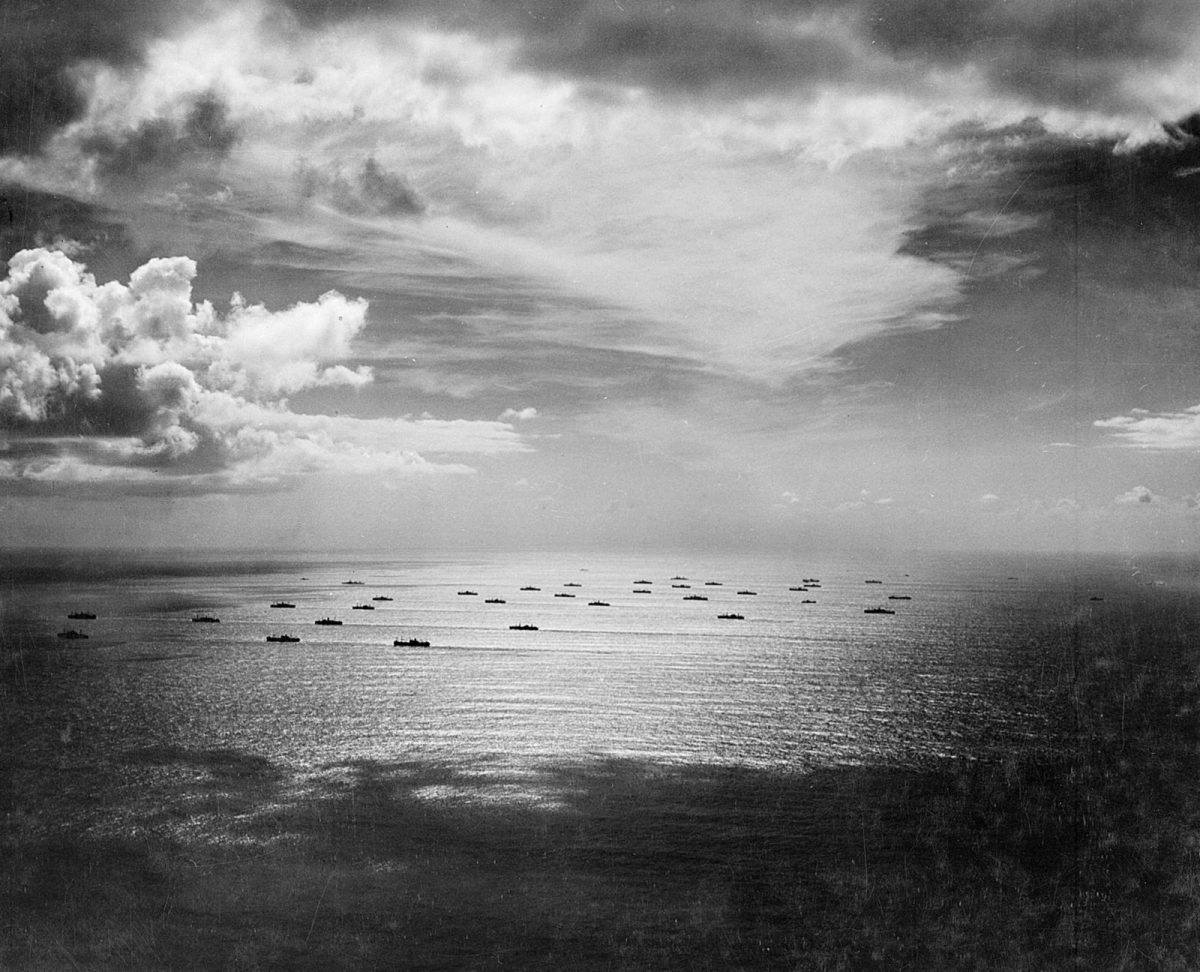
A convoy moves eastward across Atlantic bound for Casablanca, Africa, ca. November 1942.
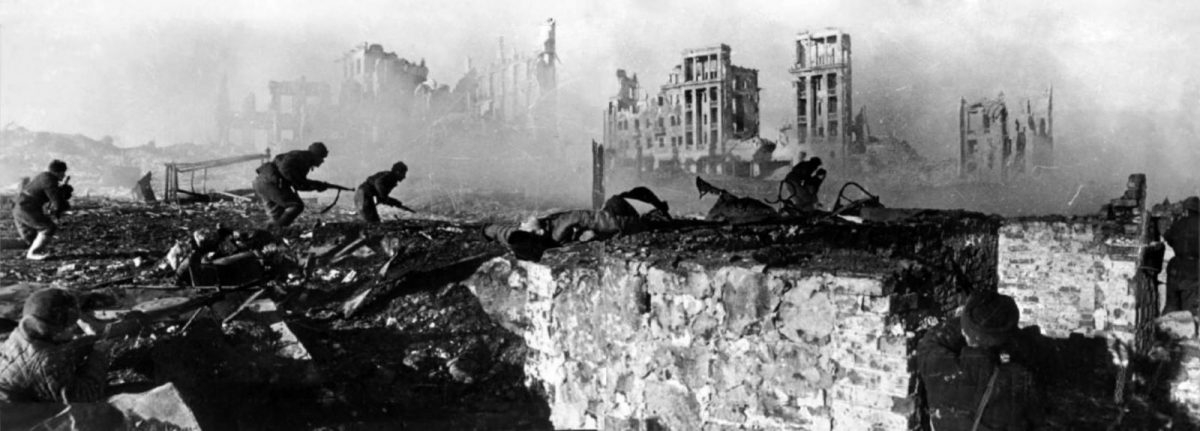
Soviet soldiers on the attack on the house, Stalingrad, February, 1943.
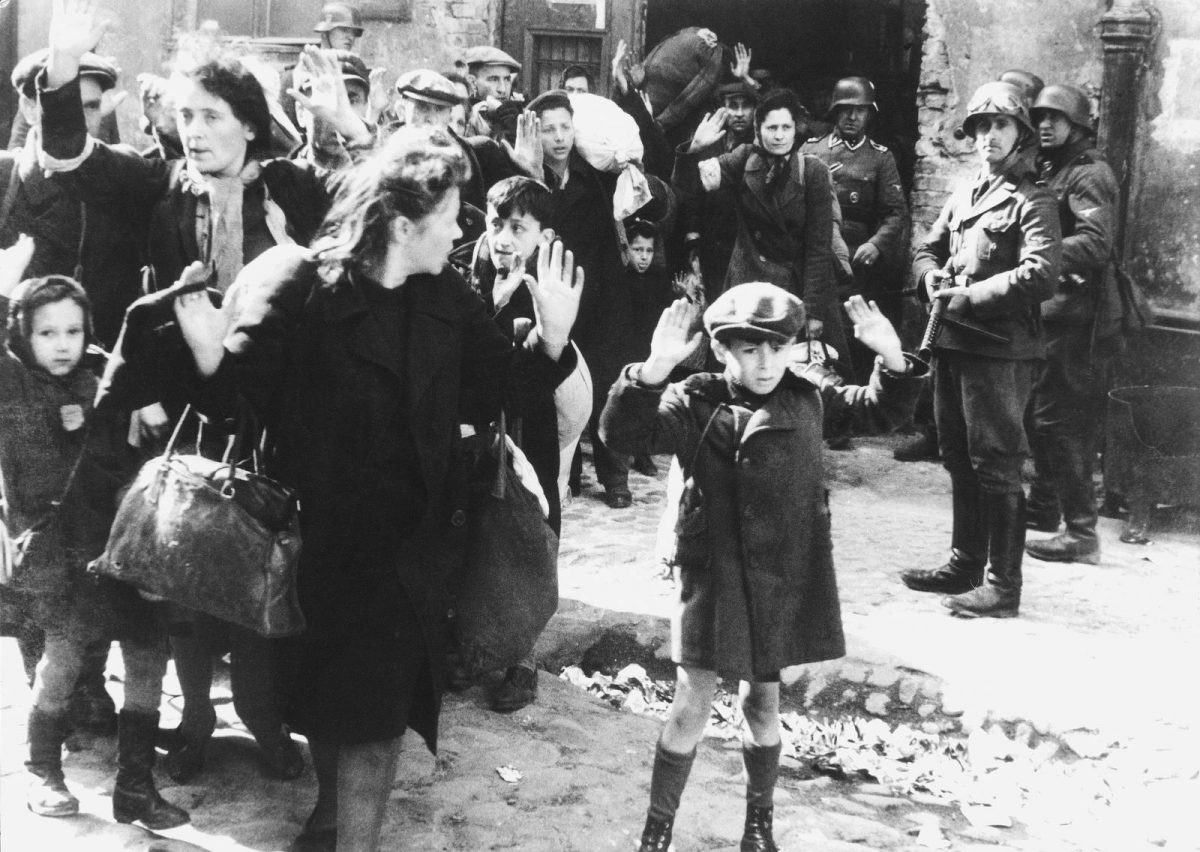
The Warsaw Ghetto uprising, May 1943. A boy holds his hands up while SS-Rottenführer Josef Blösche points a submachine gun in his direction. The boy and others hid in a bunker during the final liquidation of the ghetto. They were caught and forced out by German troops. All of the Jews in this photograph were marched to the Umschlagplatz and deported to Majdanek extermination camp or Treblinka.
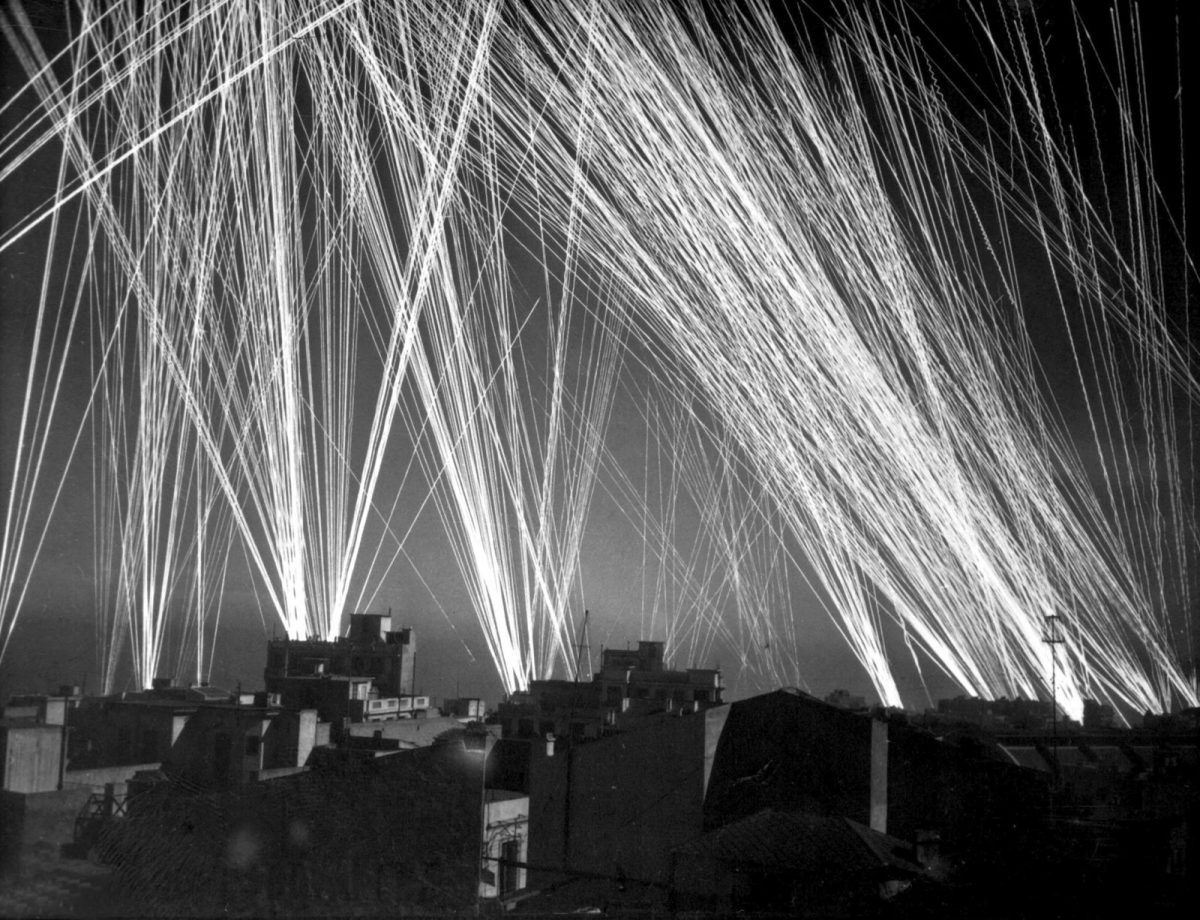
Luftwaffe raid French Algiers, 1943.

Troops in an LCVP landing craft approaching “Omaha” Beach on “D-Day”, 6 June 1944.

Into the Jaws of Death is a photograph taken on June 6, 1944, by Robert F. Sargent, a chief photographer’s mate in the United States Coast Guard. It depicts soldiers of the U.S. Army’s 1st Infantry Division disembarking from an LCVP (Landing Craft, Vehicle, Personnel) from the U.S. Coast Guard-crewed USS Samuel Chase at Omaha Beach during the Normandy Landings in World War II.
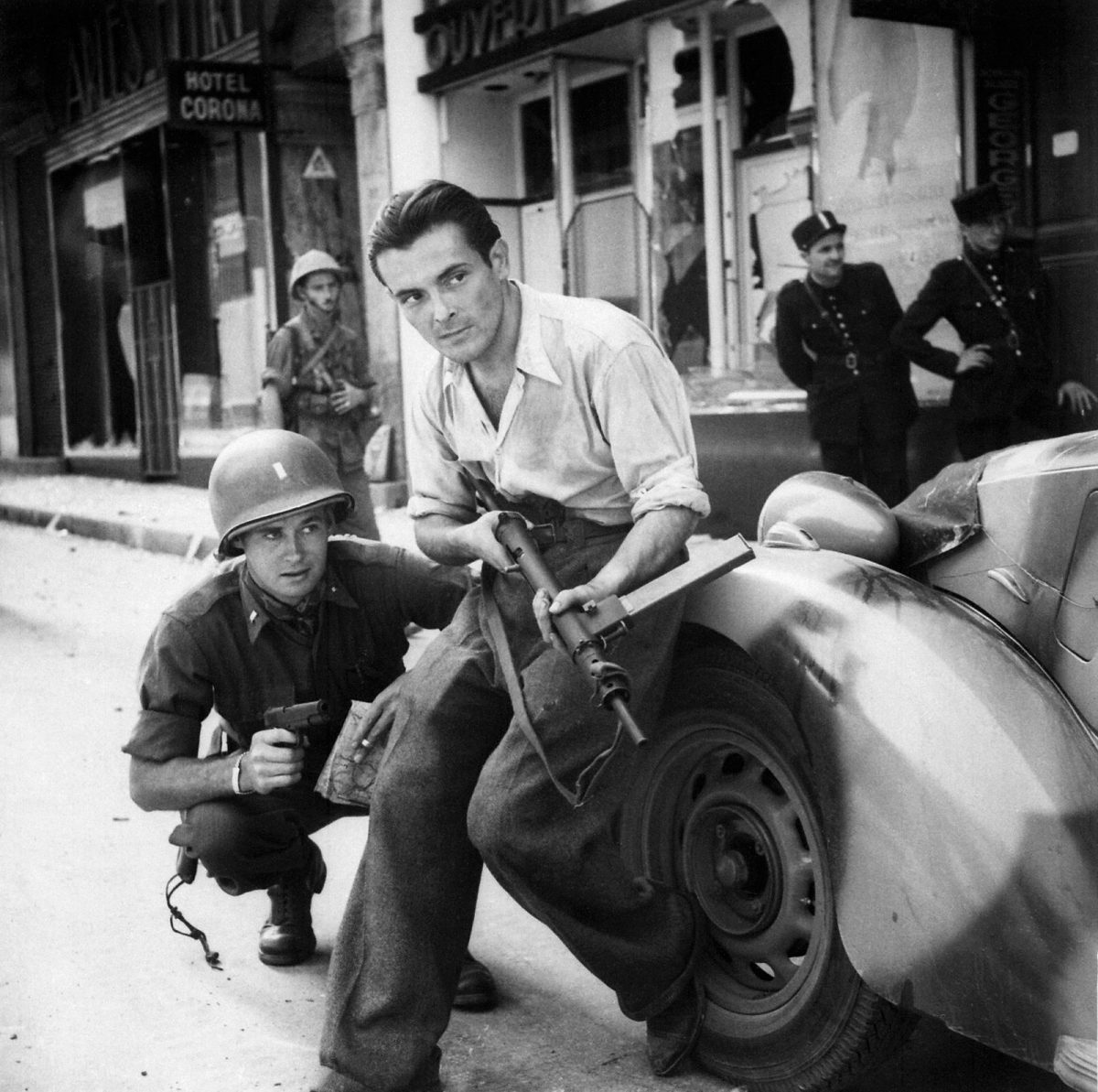
American officer and French partisan crouch behind an auto during a street fight in a French city, 1944.
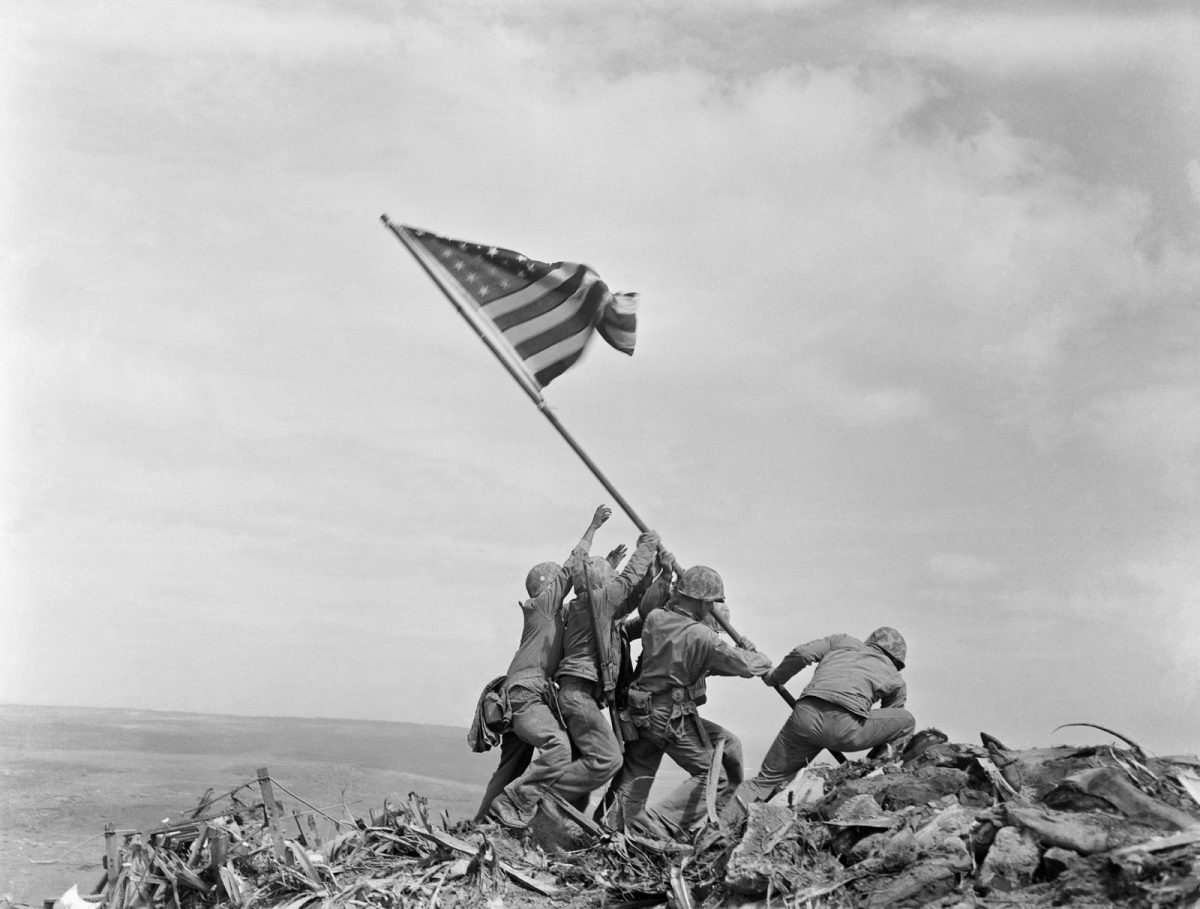
United States Marines raising the U.S. flag atop Mount Suribachi during the Battle of Iwo Jima in the final stages of the Pacific War. The photograph, taken by Joe Rosenthal of the Associated Press on February 23, 1945. This photograph won the Pulitzer Prize.
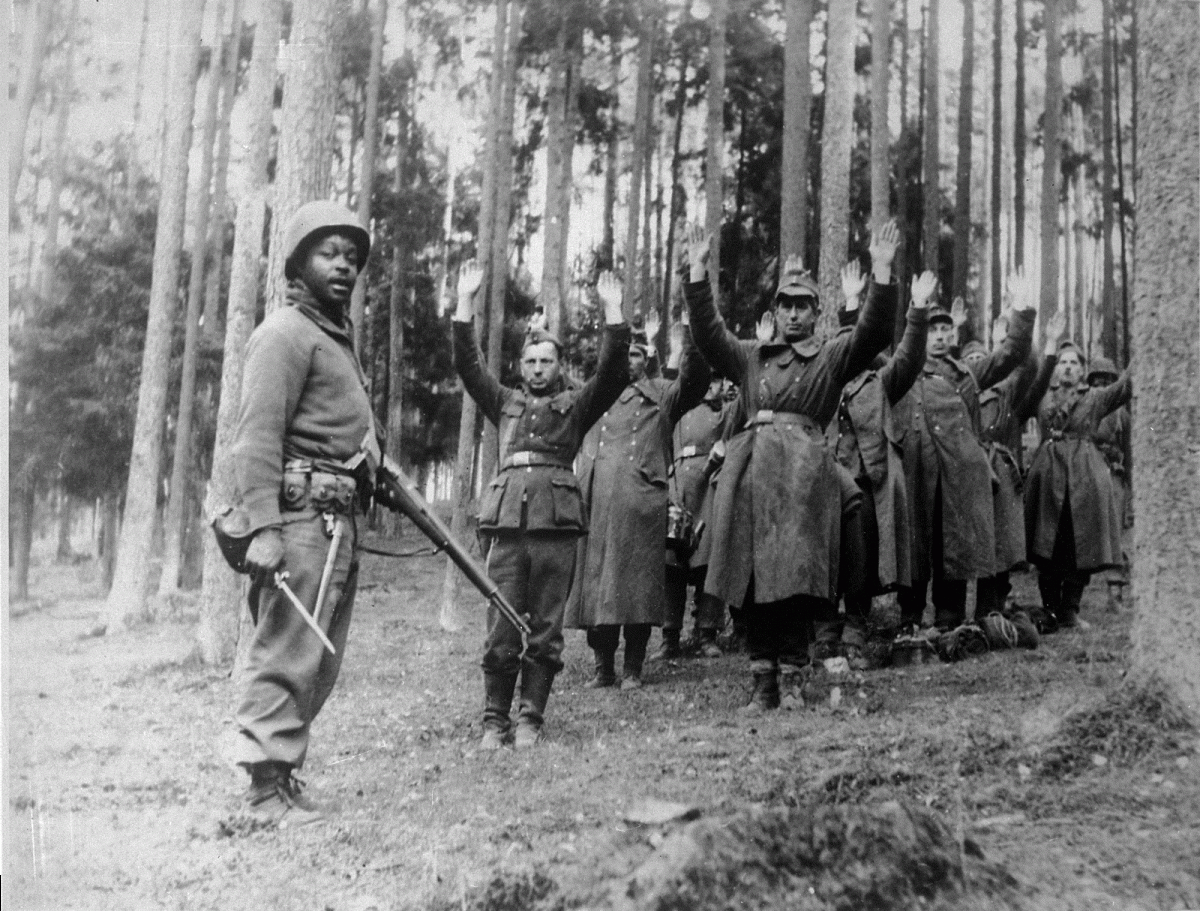
12th Armored Division soldier stands guard over a group of German prisoners, April 1945.

Slave labourers in the Buchenwald concentration camp near Weimar; many had died from malnutrition when U.S. troops of the 80th Division entered the camp. The very ill man lying at the back on the lower bunk is Max Hamburger, who had TBC and severe malnutrition. He recovered and became a psychiatrist in the Netherlands. Second row, seventh from left is Elie Wiesel.
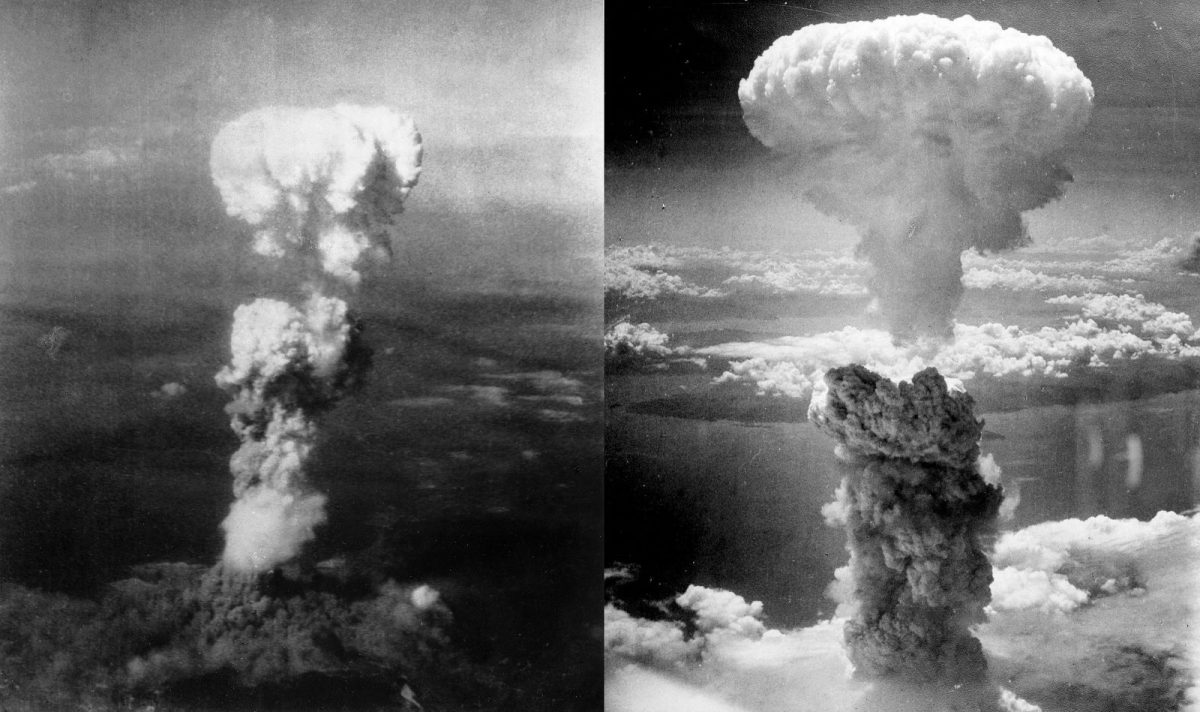
A cloud mushroomed 20,000 feet above Hiroshima while smoke from the burst of the first atomic bomb spread over 10,000 feet on the target at the base of the column, 6 August 1945.
Atomic bombing of Nagasaki on 9 August 1945.
Never forget.
Would you like to support Flashbak?
Please consider making a donation to our site. We don't want to rely on ads to bring you the best of visual culture. You can also support us by signing up to our Mailing List. And you can also follow us on Facebook, Instagram and Twitter. For great art and culture delivered to your door, visit our shop.


